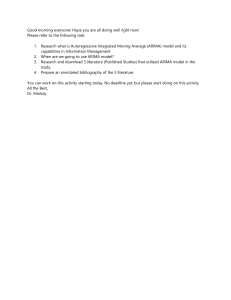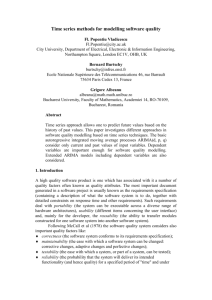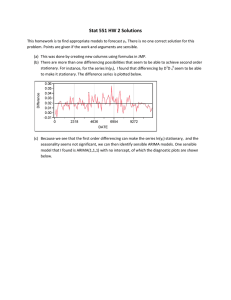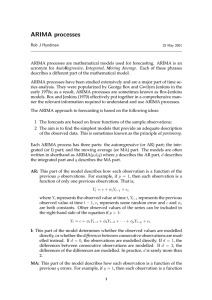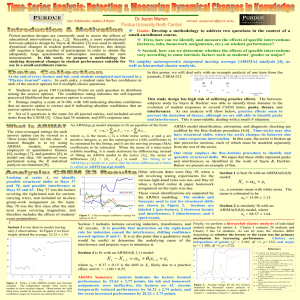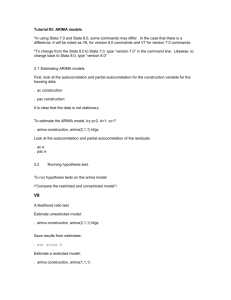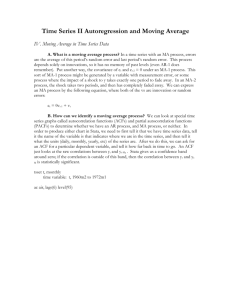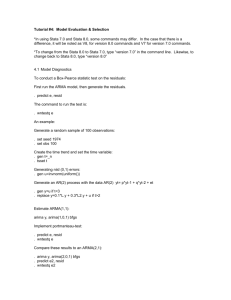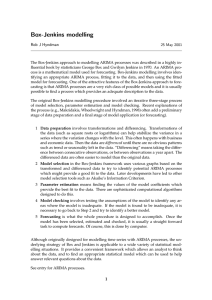Stat 551 HW 3 Solutions
advertisement
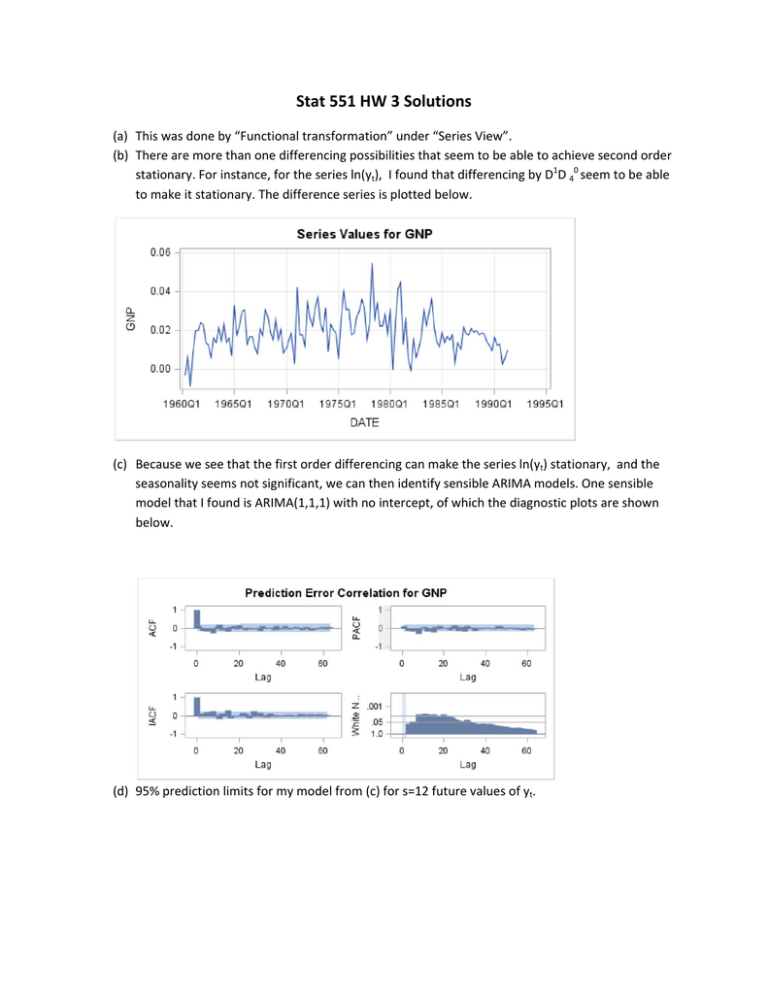
Stat 551 HW 3 Solutions (a) This was done by “Functional transformation” under “Series View”. (b) There are more than one differencing possibilities that seem to be able to achieve second order stationary. For instance, for the series ln(yt), I found that differencing by D1D 40 seem to be able to make it stationary. The difference series is plotted below. (c) Because we see that the first order differencing can make the series ln(yt) stationary, and the seasonality seems not significant, we can then identify sensible ARIMA models. One sensible model that I found is ARIMA(1,1,1) with no intercept, of which the diagnostic plots are shown below. (d) 95% prediction limits for my model from (c) for s=12 future values of yt. (h) Using SAS FS, I was able to find the “best” model, which is as following: ARIMA: GNP ~ P = 2 D = (1) NOINT + INPUT1: Dif(1) CONSUMP NUM = 2 + INPUT2: Dif(1) INVEST NUM = 2 It has the smallest 4‐period hold‐out SMAPE value, which is 0.29. Parameter estimates are as following: The diagnostics plots are as following: (i) By the selection criterion of 4‐period hold‐out SMAPE, the transfer function model in (h) fits much better than the ARIMA model in (c). The transfer function model in (h) has the SMAPE value 0.29, while the ARIMA model in (c) has the SMAPE value 1.58, which is much larger.
